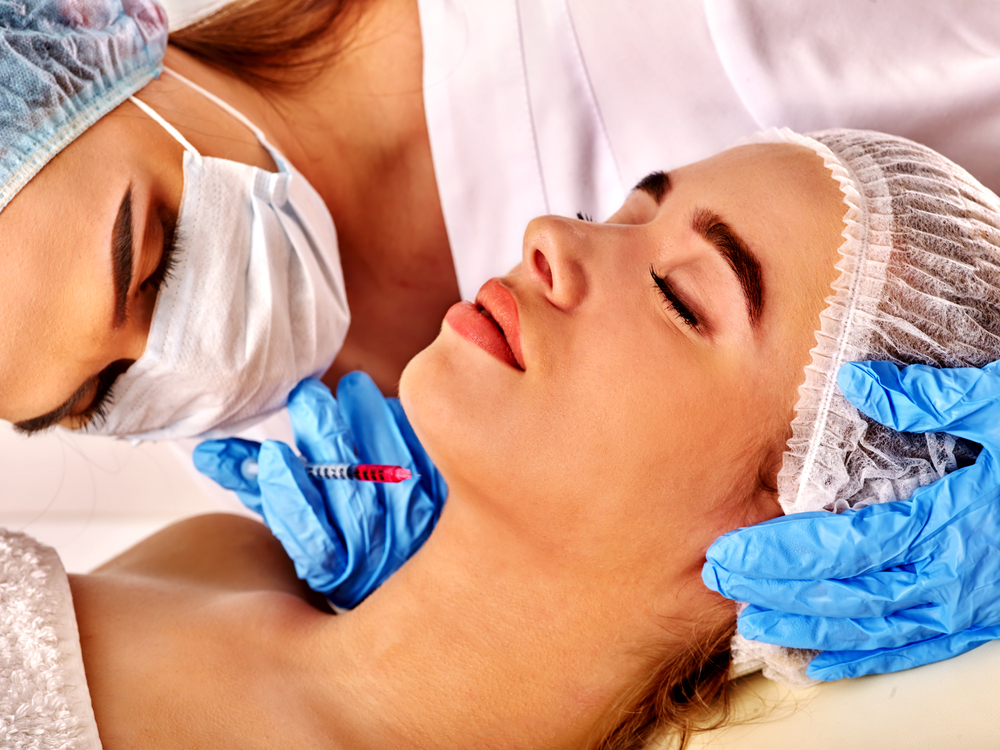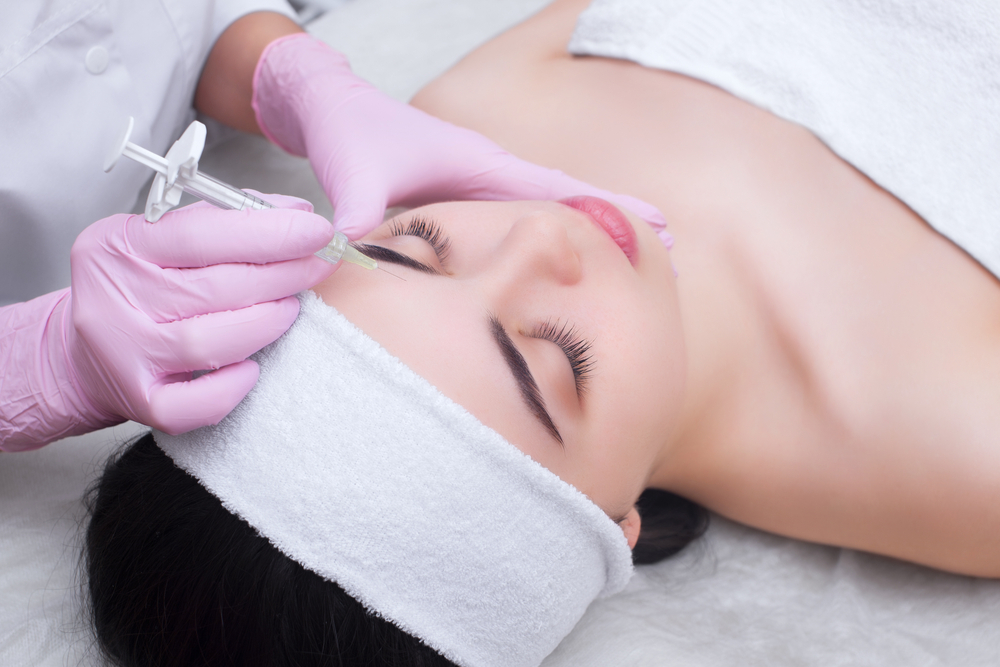- The Nefertiti Lift is a non-invasive rejuvenation treatment for the neck and jawline.
- Using Botox injections, it provides an easy alternative to more invasive procedures.
- The treatment costs $200-$600 on average, and produces results that last three to four months.
The Nefertiti Lift is named after the Egyptian Queen Nefertiti, who lived during 14th Century BC and was well known for her distinct and elegant jawline.
Here’s what you need to know about this increasingly popular, no-knife neck rejuvenation procedure.
What Is the Nefertiti Lift?
Botulinum toxin type A, commonly known as Botox, is generally used to rejuvenate skin’s appearance in the forehead, glabella (the skin between eyebrows), and periocular areas (around the eyes).
“It wasn’t until the early 2000s that Botox injections were considered a potential treatment for improving the appearance of the neck,” explains Swiss dermatologist Dr. Phillip Levy, the originator of the Nefertiti Lift.
While some patients will have an eventual need for a more intensive surgery as they age, the Nefertiti Lift can successfully produce the visual effect of a “mini lift.”
“The Nefertiti Lift is a minimally invasive, effective, and acceptable alternative for those patients seeking a way to push back surgery,” says Dr. Levy.
What is Botulinum Toxin Type A or Botox?
Derived from bacteria, botulinum toxin is a purified substance that blocks nerve signals to the muscles. Without a signal, the muscle is unable to contract. As a nonsurgical treatment delivered by injection, this results in a diminution of facial lines and wrinkles.
Several brands currently exist on the market; in addition to the Botox brand manufactured by Allergan, Galderma produces Dysport, and Merz produces Xeomin.
The most common issues for Botox injections include:
- Wrinkles around the eyebrows
- Forehead creases
- Eye wrinkles
- Neck wrinkles
- Creases and lines around the lips
Botox can also be used for muscular issues such as:
- Softening a square jaw line
- Lifting the corners of the mouth
- Lessening the appearance of skin dimpling in the chin
- Correcting a “gummy smile” – a smile that reveals too much gums
How Does the Nefertiti Lift Work?
Administered within a 5–15 minute timeframe, Botox is injected into several locations along the lower jaw and down the patient’s neck. The injections in the neck are focused in the platysma muscles, which serve to pull the jaw muscles downward.
“The platysma muscle acts as a major depressor in the lower face with subsequent inaesthetic complications,” explains Dr. Levy in a 2015 abstract. “Botulinum toxin A can be very useful to reverse some of these [unwanted complications].”
Injections to the neck and jawline result in a noticeable tightening, smoothing, and lifting effect of the skin.
“When the platysma muscle contracts, there is a downward pull on the tissues of the lower face, including the jowls,” explains cosmetic dermatologist Dr. Shaun Patel of Miami Skin and Vein. “Relaxing the platysma will reduce this downward pull.”
Results and Treatment Frequency
While results may be visible immediately following the treatment, it can take several days to fully appreciate the injections’ lifting effects.
“The results of Botox and Dysport usually take one to two weeks to see and then last three to four months,” explains Dr. Patel.
Like any botulinum toxin treatment, these effects are not permanent. In order to sustain the appearance of a lifted and tighter jaw and neckline, patients are recommended to undergo several treatments a year, depending on their individual needs.
“I recommend that my patients get the treatment at least three times a year,” says Dr. Patel.
Who Is a Good Candidate for the Nefertiti Lift?
Ideal candidates meet several of the following descriptions:
- Normal or thin weight
- No excessive fat along the jawline
- Loose or folding skin below the chin or jawline
- Neck bands or “turkey neck”
- Mild to severe “jowls” or cheeks that hang below the jawline
- Rippled appearance along the jawline
- A very pronounced, square jawline
“The Nefertiti Lift is not about treating the fat which can make up ‘jowls’ on a person’s jawline,” explains Dr. Patel. “A good aesthetic physician will evaluate a patient to ensure their existing jawline and platysma muscle contractions are an appropriate fit for this treatment.”
Dr. Patel also cautions that for some, the results of this treatment can be subtle. Patients with severe skin sagging, jowls, and other skin issues along the jawline may find the results underwhelming, and require a more invasive procedure.
What Are the Risks?
While the Nefertiti Lift is considered a reasonably safe and easy complement to other aesthetic techniques for improving the appearance of one’s jawline and neck, this treatment should only be administered by an experienced practitioner.
In a 2009 study on the benefits of Botox injections in the neck and lower regions of the face, a panel of dermatologists recommends caution when choosing your practitioner, as the injections are delicate and require in-depth knowledge of the muscle area.
Injections of botulinum toxin are considered very safe, says the American Society of Plastic Surgeons (ASPS), and come with very minimal risks when performed by experienced professionals.
However, excessive doses or inaccurate injection points can quickly lead to “undesirable” side effects, such as:
- Temporary bruising or pain at the injection site
- Flu-like symptoms
- Headache
- Nausea
- Redness in the treated area
- Temporary facial weakness or drooping
In more serious and rare cases, the Botox may to spread to certain unintended areas, leading to breathing problems, trouble swallowing, muscle weakness, and slurred speech.
Avoid rubbing or massaging any areas recently treated, as this could potentially cause the toxin to migrate to other parts of your face or neck. If you notice any signs of facial weakness or drooping, contact your surgeon or primary care immediately.
Patients are also asked to avoid makeup and rigorous exercise for the 24-hour period following their treatment.
With considerably low reports of adverse effects, overall patient satisfaction rates are extremely high—and downtime is nearly nonexistent as the treatment is gentle and noninvasive.
Long-Term Skincare After a Botox Neck Lift
In addition to scheduling Nefertiti treatments every three to four months, it is crucial that patients understand that the success of their treatment—both short term and long term—will be affected by their everyday skincare routine.
“The patients who see the best results,” explains Dr. Patel, “are those who take their anti-aging skincare regimen seriously.”
Use sunscreen, avoid sunburns, apply retinol cream, don’t smoke, and eat an overall healthy diet—these are the most basic and effective steps any person can take to maintain healthy looking skin, before and after receiving any cosmetic treatments like the Nefertiti Lift.
What Does It Cost?
The ASPS reports the average cost of any botulinum toxin injections as approximately $385 per treatment session. The Nefertiti Lift also fits this average, and costs from $200 to $600 per treatment, depending on individual needs.
Is It Covered by Insurance?
In most cases, Botox treatments—including the Nefertiti Lift—are considered elective procedures because they are not medically required for the patient’s health.
The only medical condition that a Nefertiti Lift can effectively treat is “platysma muscle hyperactivity.” This is when bands of muscle on the neck tighten—either over time with age or quickly in response to trauma. Some patients may qualify for insurance coverage for this condition.
What Other Treatments Exist for the Neck Area?
The following cosmetic treatments aim to improve the appearance of the neck, jawline, and chin area:
- Surgical neck-lift – tightens the skin around the neck, jawline, and below the chin by surgically removing excess skin
- Neck liposuction – suctions fat out of the neck area by surgically inserting a small cannula into several small incisions in the neck
- Kybella injections – target and dissolve stubborn fat pockets beneath the chin
Patients who are seeking to turn back the clock without going under the knife may also want to consider laser treatments, ultrasound, and other energy-based procedures that stimulate collagen production.
» Find out more about these and other neck rejuvenation treatments on Zwivel’s forum, where cosmetic doctors will answer your questions and provide personalized advice.









